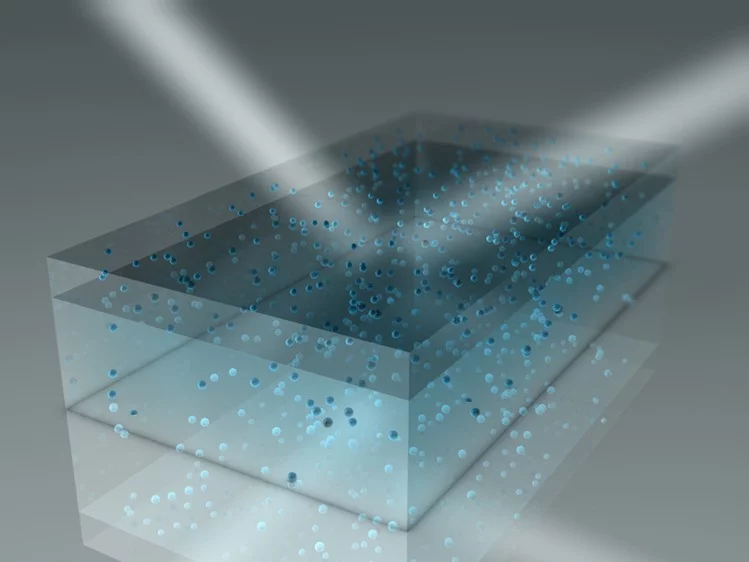Epitaxial thin films of the proton-conducting perovskite BaZr0.53In0.47O3−δH0.47−2δ, grown by pulsed laser deposition, were investigated in their hydrated and dehydrated conditions through a multitechnique approach with the aim to study the structure and proton concentration depth profile and their relationship to proton conductivity. The techniques used were X-ray diffraction, X-ray and neutron reflectivity, nuclear reaction analysis, and Rutherford backscattering, together with impedance spectroscopy. The obtained proton conductivity and activation energy are comparable to literature values for the bulk conductivity of similar materials, thus showing that grain-boundary conductivity is negligible due to the high crystallinity of the film. The results reveal an uneven proton concentration depth profile, with the presence of a 3−4 nm thick, proton-rich layer with altered composition, likely characterized by cationic deficiency. While this surface layer either retains or reobtains protons after desorption and cooling to room temperature, the bulk of the film absorbs and desorbs protons in the expected manner. It is suggested that the protons in the near-surface, protonrich region are located in proton sites characterized by relatively strong O−H bonds due to weak hydrogen-bond interactions to neighboring oxygen atoms and that the mobility of protons in these sites is generally lower than in proton sites associated with stronger hydrogen bonds. It follows that strongly hydrogen-bonding configurations are important for high proton mobility.
Facility: ENE, LMX, Thin Films and Interfaces
Reference: L. Mazzei et al, J. Phys. Chem. C 120, 28415−28422 (2016)
Read full article: here


